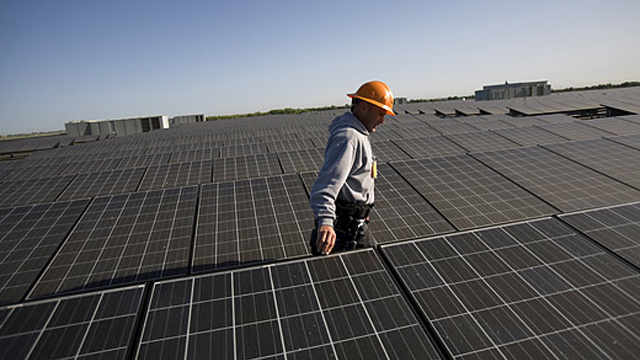We don’t think much about pitch pine poles until storms like Hurricane Sandy litter our landscape with their splintered corpses and arcing power lines. Crews from as far away as California and Quebec have worked feverishly to repair or replace those poles as utility companies rebuild their distribution systems the way they were before.
Residents of New Jersey and New York have lived through three major storms in the past 16 months, suffering through sustained blackouts, closed roads and schools, long gas lines and disrupted lives, all caused by the destruction of our electric system. When our power industry is unable to perform its most basic mission of supplying safe, affordable and reliable power, we need to ask whether it is really sensible to run the 21st century by using an antiquated and vulnerable system of copper wires and wooden poles.
Some of our neighbors have taken matters into their own hands, purchasing portable gas-powered generators in order to give themselves varying degrees of “grid independence.” But these dirty, noisy and expensive devices have no value outside of a power failure. And they’re not much help during a failure if gasoline is impossible to procure.
Having spent our careers in and around the power industry, we believe there is a better way to secure grid independence for our homes and businesses. (Disclosure: Mr. Crane’s company, based in Princeton, N.J., generates power from coal, natural gas, and nuclear, wind and solar energy.) Solar photovoltaic technology can significantly reduce our reliance on fossil fuels and our dependence on the grid. Electricity-producing photovoltaic panels installed on houses, on the roofs of warehouses and big box stores and over parking lots can be wired so that they deliver power when the grid fails.
Solar panels have dropped in price by 80 percent in the past five years and can provide electricity at a cost that is at or below the current retail cost of grid power in 20 states, including many of the Northeast states. So why isn’t there more of a push for this clean, affordable, safe and inexhaustible source of electricity?
First, the investor-owned utilities that depend on the existing system for their profits have little economic interest in promoting a technology that empowers customers to generate their own power. Second, state regulatory agencies and local governments impose burdensome permitting and siting requirements that unnecessarily raise installation costs. Today, navigating the regulatory red tape constitutes 25 percent to 30 percent of the total cost of solar installation in the United States, according to data from the National Renewable Energy Laboratory, and, as such, represents a higher percentage of the overall cost than the solar equipment itself.
Read the rest at NYTimes.com.
Photo via Time
